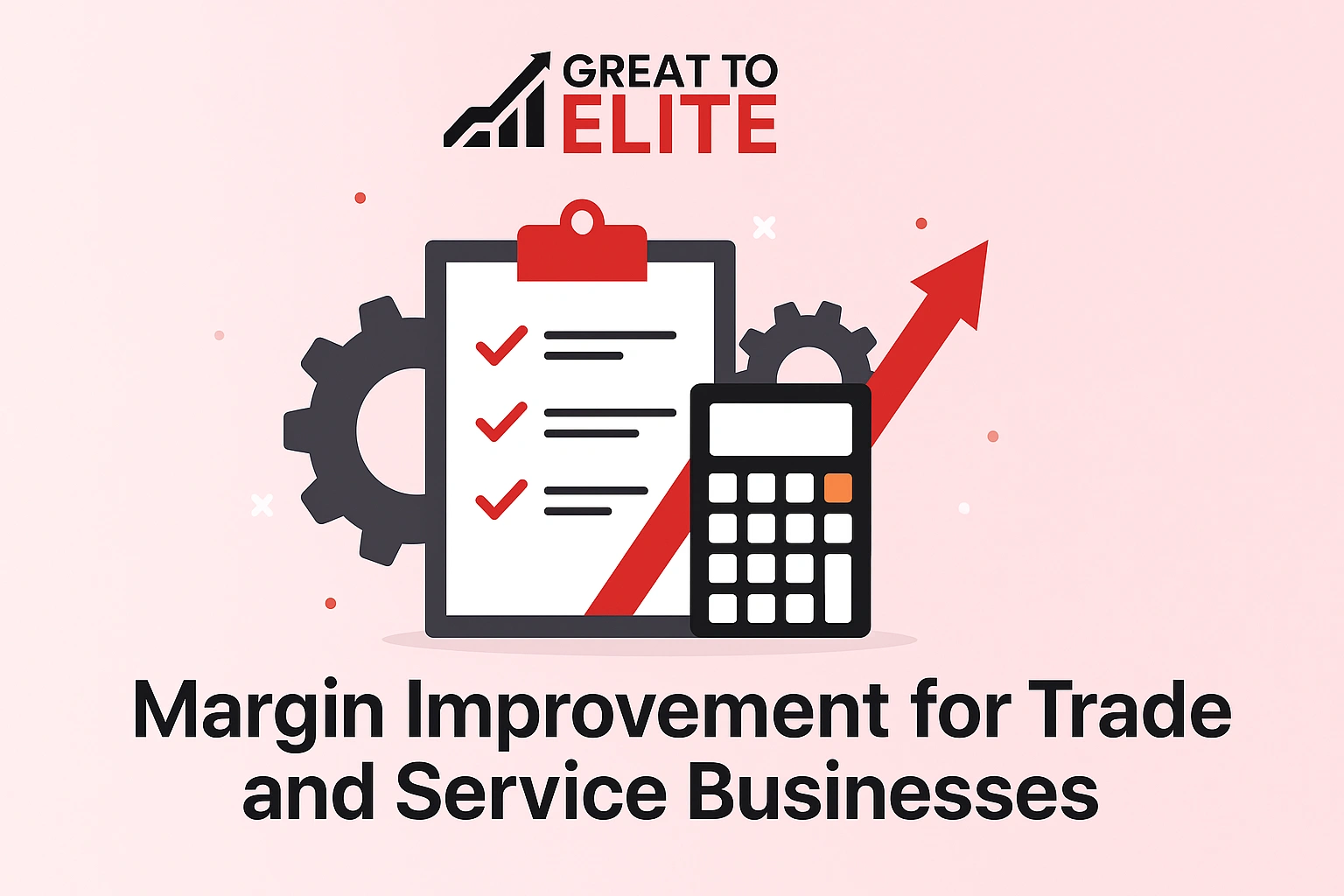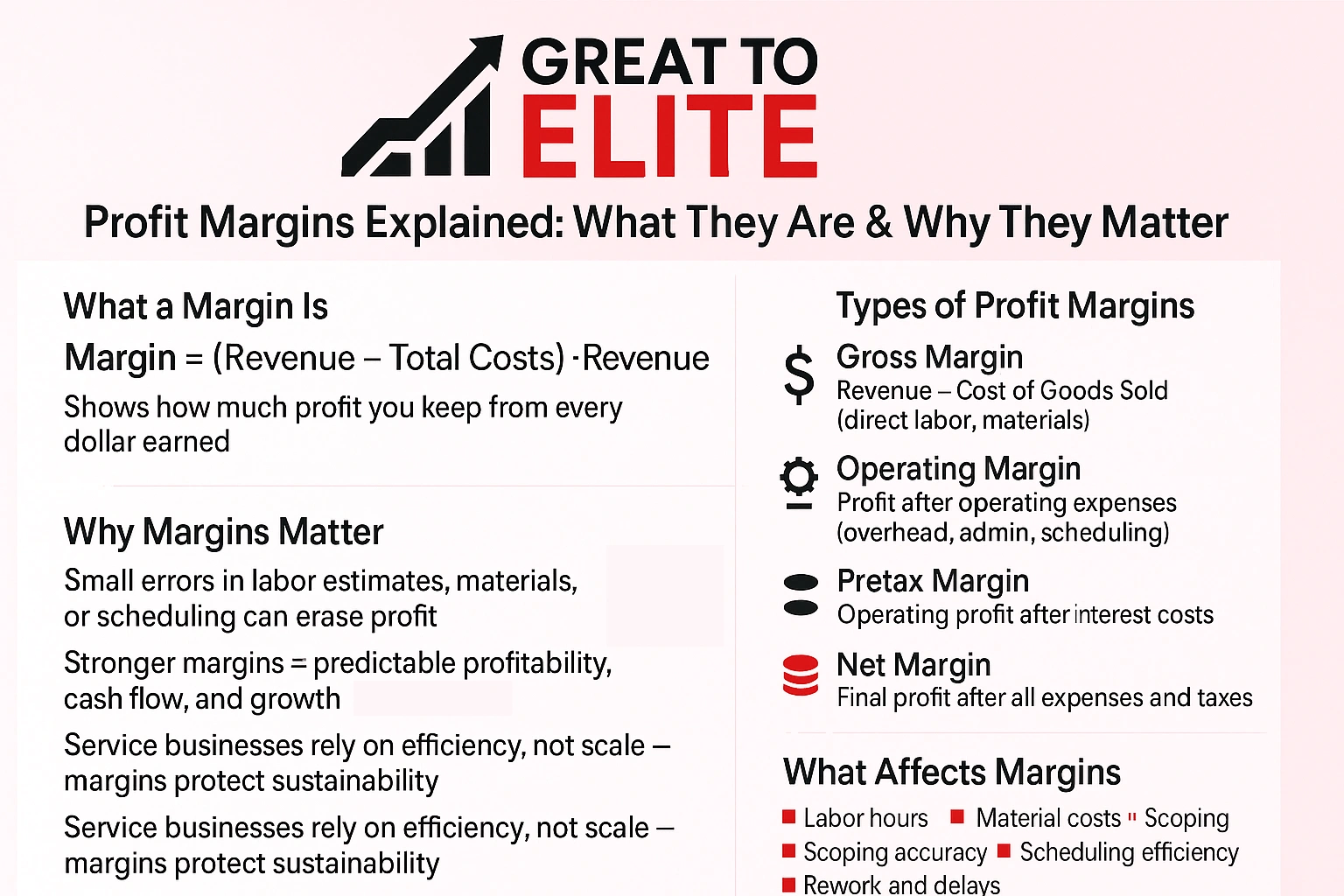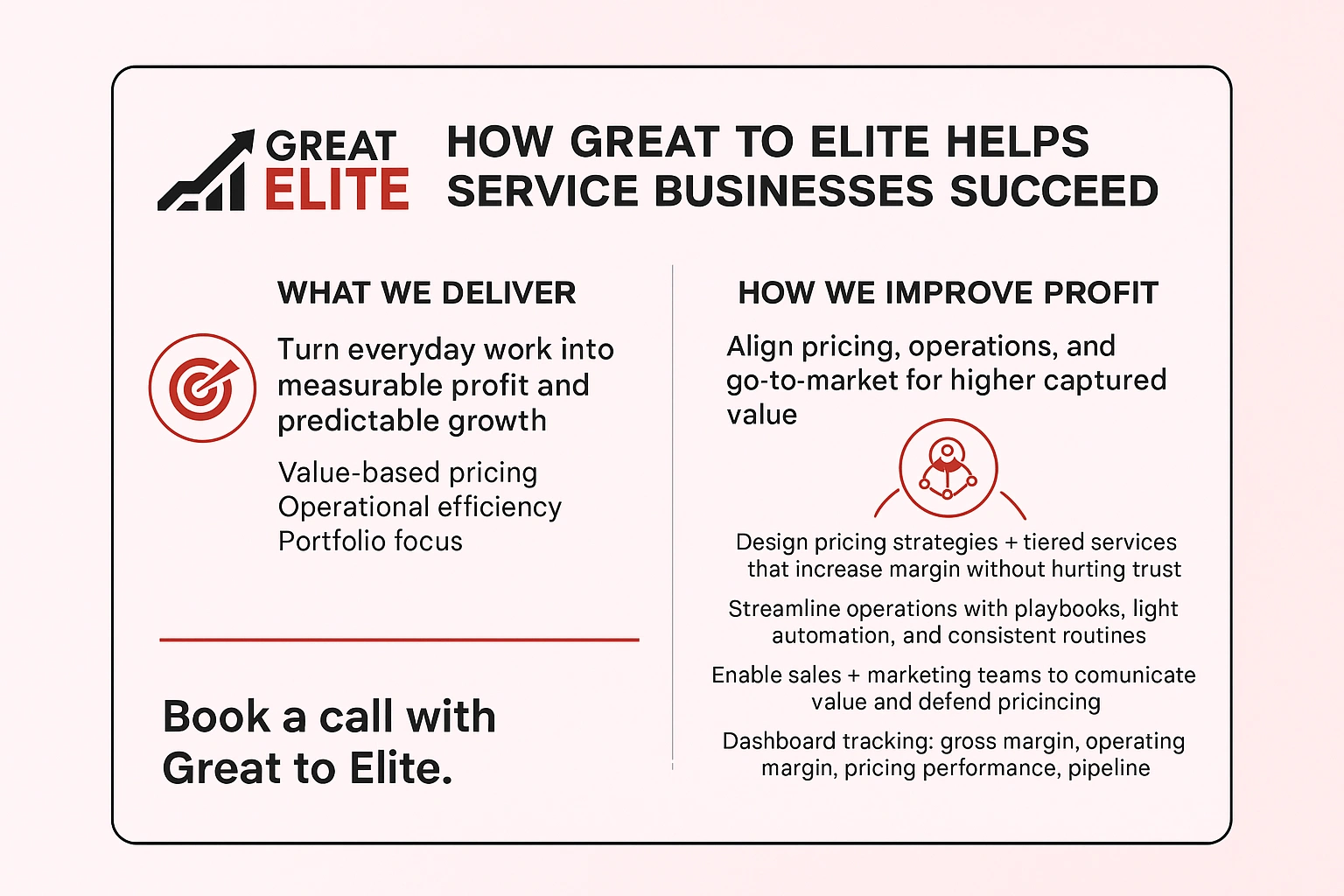Margin Improvement for Trade and Service Businesses








Margin improvement is the discipline of increasing the gap between what it costs you to deliver work and what you actually earn from it, and for trade and service businesses, that gap determines whether you grow or constantly fight to stay profitable. These businesses operate in environments where labor hours, material costs, job scoping, and scheduling efficiency shift daily, which means even small inaccuracies or delays can quietly erode margins.
Margin improvement for trade and service businesses is the difference between a company that struggles to stay afloat and one that grows with confidence, control, and predictable profitability. At its core, margin improvement means increasing the gap between what it costs you to deliver your services or goods and what you earn from them. For service and trade businesses, where labor, materials, scheduling efficiency, and project execution all collide, this gap is where sustainability and growth are won or lost.
In these industries, margins are uniquely sensitive. A few underestimated labor hours, small fluctuations in material costs, scheduling inefficiencies, or inconsistent job scoping can erode profits long before you notice them. Unlike product-based companies that rely on economies of scale, service and trade businesses live and die by execution quality, capacity planning, and real-time operational decisions. Margin improvement, therefore, isn’t just about raising prices or cutting costs; it’s about building a system where every project, every crew, and every workflow contributes reliably to healthier margins.
A strong margin improvement strategy gives these businesses the clarity to price accurately, the tools to prevent profit leakage during delivery, and the visibility to make faster decisions based on actual performance, not assumptions. When done right, it turns chaotic operations into predictable profit engines and transforms margin pressure into a competitive advantage.
Gross profit margin shows the share of revenue left after cost of goods sold and is calculated as (Revenue − Cost of Sales) ÷ Revenue. It isolates direct job or project costs.
Operating profit margin reflects profit after operating costs and is Operating Profit ÷ Revenue. It reveals how well routine operations convert sales into usable profit.
Pretax profit margin adjusts operating profit for net interest, then divides by revenue. Net profit margin includes taxes and gives the most complete view of net profit for the company.
Calculate each figure and tie it back to revenue, costs, and expenses so the numbers tell a story. Low gross margins point to pricing or cost-of-goods issues. Low operating margins point to overhead, scheduling, or rework.
Use operating margin as a daily health check because it maps routine operations to profit. For example, a service job with high labor efficiency lifts operating margin, while poor scheduling and rework erode it.

To boost profit in a service business, you must widen the gap between what customers will pay and what you pay your suppliers. Cost-value-profit analysis strengthens this work and shows exactly how value perceived by customers, the true cost of delivering that value, and the resulting contribution margin interact. When you understand where value is created and where costs accumulate, you can design services, pricing, and operations that expand this gap intentionally. That gap ultimately determines how much of each sale becomes usable profit for your company.
Willingness to pay is the maximum a customer will spend based on perceived value. Raise that perception and add clear benefits customers care about. Best-in-class proactive service businesses (using value-based pricing) can achieve gross profit margins of ~45%.
Lower supplier costs and negotiate bulk buys, multi-period contracts, or standardized specs. Treat employees as suppliers too, flexible scheduling or benefits can lower wage cost without hurting service.
Set prices to reflect the outcomes your clients value, not just the hours you log. That shift helps your company capture more of the benefit you deliver and lifts profit margin without eroding trust.
Anchor pricing to clear customer outcomes, faster downtime recovery, guaranteed response windows, measured cost savings, and improved cost efficiency. Use those outcomes as the basis for tiers and packages.
Anchor price to results customers care about. Quantify benefits and show how your product or service reduces pain or increases revenue. Test on a few offers before a full rollout.
Create three tiers that let customers self-select. Keep scope clear and avoid hidden fees. Tiers broaden appeal while protecting trust and margins.
Before you raise prices, present outcomes, testimonials, and guarantees. Script sales conversations so reps link features to customer gains.
Monitor competitors and adjust prices periodically. Use small tests to learn elasticity and scale winners without risky, large shifts.
When you digitize repetitive tasks, you reduce errors and free your team to focus on revenue work. Start with accounting, payroll, and inventory; these are low-risk wins that save time and cut expenses.
Automating routine tasks lowers manual mistakes and gives you real-time data to manage operating efficiency and profit. Use cloud tools to centralize records and speed decision making.
Adopt lean thinking to remove waste and shorten lead times. Create visual standards and playbooks so new employees onboard faster and deliver consistent results.
Outsource IT support, bookkeeping, or payroll where specialists deliver better outcomes at lower cost. That lets your employees focus on field work and customer service that drive revenue.
Evaluate targeted AI use cases, chatbots, payroll automation, inventory forecasting, and predictive maintenance, as practical examples. Use pilots to prove value before full rollout.
Pinpoint which offerings truly fund growth, then cut the noise around low-return work. Calculate fully loaded costs for each product and service. Include direct labor, parts, overhead, and the hidden cost-to-serve for specific customers.
Map costs to jobs and accounts so you see which products and customers produce real profit. Use simple cost sheets to compare gross return per job.
Prioritize products and services that yield the best returns. Align marketing and pricing to those segments and redesign delivery models and SLAs to match profitable expectations.
Publicize verifiable sustainability practices to raise perceived value. Many buyers now demand ESG criteria; highlighting your efforts can justify higher pricing and help hiring and retention.
Turn strategy into a short, testable plan so your team sees how each change affects profit and service. Start with a quick SWOT to align strengths, weaknesses, opportunities, and threats to clear goals.
Run a focused SWOT to pick a short list of areas improvement that offer high ROI and fast payback. Use external trend checks, AI adoption, sustainability rules, or supplier shifts, to weight opportunities.
Establish KPIs for gross margin, operating margin, and net profit margin and review them alongside revenue and costs. Make each metric visible to the company so the team understands how daily work moves the needle.
Create a 90-day plan with owners, milestones, and expected impact on profit and pricing. Schedule weekly huddles to test assumptions and monthly reviews to adapt strategies.
Define escalation paths and how management communicates wins and lessons so learning compounds into repeatable success.
Great to Elite helps service businesses convert everyday work into measurable profit and predictable growth. We combine value-based pricing, operational efficiency, and focused portfolio strategies in a practical playbook you can run with your team.
Our approach ties pricing, operations, and go-to-market so you capture more value from every engagement. We work alongside your people to make changes that boost service quality while lifting profits and preserving customer trust.
Great to Elite partners with your company to improve profit and align pricing, operations, and go-to-market so you capture more value from every engagement.
Ready to act? Book a call with Great to Elite to review your current baseline, identify two to three quick wins, and map a plan to increase profit and improve profit with measurable milestones.

A focused playbook helps you turn price, suppliers, and operations into sustained profit.
You now have a clear path to grow profit and protect profit margin. Align price to customer value, work with suppliers to lower cost goods, and tighten delivery so each product and service earns what it should.
Raise prices with evidence, keep scope clear, and track the impact on sales and net profit. Use AI selectively to cut cycle time and rework, and lean on sustainability signals to strengthen value for customers.
Set a short review cadence, name owners, and lock in deadlines. If you want help turning this into a 90-day plan, book a call with Great to Elite to document your top three opportunities and start increasing profit today.